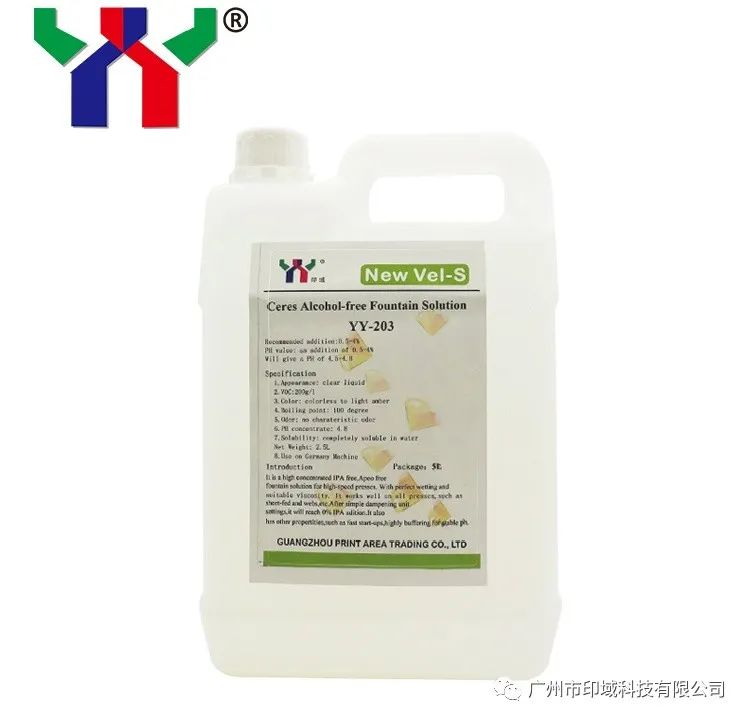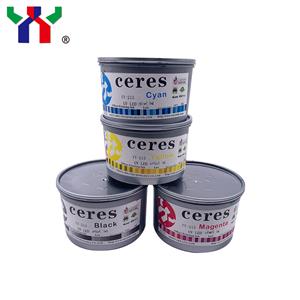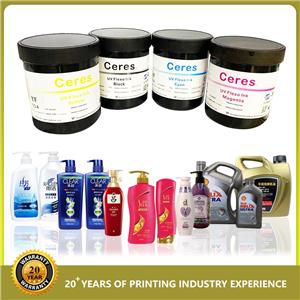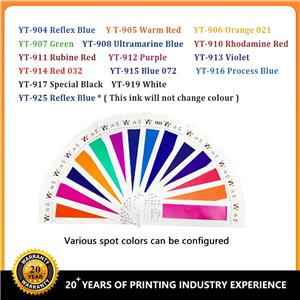Eight issues that need to be paid attention to in the printing process of offset ink
How do the characteristics of the ink determine the amount of fountain solution used?
The fluidity of the ink can affect the amount of fountain solution used during printing. In the printing process, one of the reasons for using fountain solution is to make it easier for clear water to form a water film on the non-printed parts, so that the ink is not easy to spread to these parts. Assuming that the fluidity of the ink is small, it will spread more slowly on the printing plate, and the ink will stay in the non-printed part for a shorter time. In this case, we can use a smaller amount of fountain solution; on the contrary, assuming that the ink has high fluidity, we have to increase the amount of fountain solution appropriately to prevent the ink from sticking to the non-printed part.

After the ink is emulsified,
What will change?
If the ink is emulsified, it will produce the following changes:
(1) After emulsification. The water is shot into the ink, occupying the space between its original elements, thus increasing the volume of the ink;
(2) Also, because water molecules occupy the space of the ink, the proportion of the area occupied by the pigment particles on the ink surface is reduced. Because the pigment reflects the color light in the air, so we can see the color of the ink, so the pigment particles are less, the light that the ink can reflect is less, and the hue of the ink is destroyed. Brightness and saturation;
(3) When water penetrates into the ink, its viscosity will decrease accordingly.
What is the role of ink viscosity in printing?
Viscosity can also be called internal friction or cohesion. In physics, its direction of force is exactly opposite to the direction of liquid flow, which is a kind of resistance to flow. Use the ink transfer to explain that the viscosity is based on the fact that the ink layer of the ink is pulled apart during the transfer process. In order to counter this pulling force, another inward force appears, which is the viscosity. Offset printing often requires the ink to have a certain viscosity, so that when the ink is spread on a flat surface, there is a certain adhesion force to make the dots clear; on the other hand, it can make the surface line speed of the ink roller equal, and help the ink evenly transfer and maintain A certain thickness of the ink layer.
What is the problem if the viscosity is too high or too low?
If the viscosity is too large, the ink transfer is easy to be uneven, the paper wool and paper powder are easy to peel off, but the paper is difficult to peel from the rubber roller, and the printing quality is greatly affected; and the viscosity is too large, and the ink will spread slowly on the printing plate. The ink layer on the printing plate, after several rotations, the remaining ink layer is not enough to protect the plate surface, as a result, it will not withstand the pressure of printing and the action of the fountain solution, making the printing plate easy to pattern. However, if the viscosity is too small, the ink will be too easy to emulsify, get dirty, and make the printing quality poor.
What is the role of ink fluidity?
The relationship between fluidity and viscosity is inversely proportional. The greater the fluidity, the lower the viscosity; the lower the fluidity, the higher the viscosity. The fluidity of the ink is good, which can ensure the quality of printing to a certain extent, because under the same pressure, the ink can easily spread the ink film of uniform thickness on the surface of the ink roller, and maintain good transfer, so that the printing will not There are uneven prints.
How many drying methods are available for the ink?
In fact, different inks will use different methods to dry the inks according to their characteristics and different printing methods. Generally speaking, the following are not listed:
(1) Ink oxidation. This drying form of polymeric conjunctiva is the main drying form of offset printing;
(2) Permeation drying. When the ink is printed on the paper, its binder will penetrate into the inside of the paper and dry due to the capillary action of the paper fibers;
(3) Playful dryness. After the ink is printed on the paper, only part of it will penetrate into the paper, but most of it will be released.
Why should we use a drier in the ink?
When the drying capacity of the ink binder itself is not enough to meet the time requirements of printing and color registration, we have to add a drier to the ink to speed up the drying speed. The drier can combine with the antioxidant substances in the ink to eliminate them and reduce the adverse effects of the antioxidant substances. In addition, the drier can directly absorb oxygen in the air, making it easier for the ink to obtain the oxygen needed for drying, and accelerate the oxidation drying.




